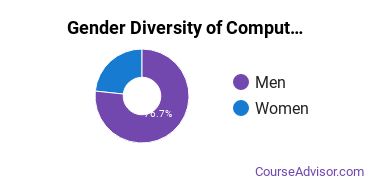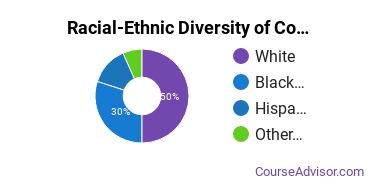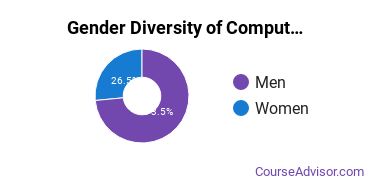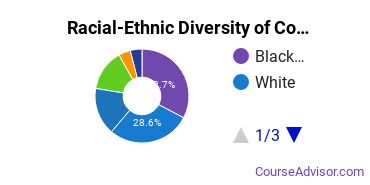Computer & Information Sciences at Walden University
Walden University is located in Minneapolis, Minnesota and has a total student population of 49,695.
Want to know more about the career opportunities in this field? Check out the Careers in Computer & Information Sciences section at the bottom of this page.
Walden University Computer & Information Sciences Degrees Available
- Bachelor’s Degree in Computer & Information Sciences
- Master’s Degree in Computer & Information Sciences
Online Classes Are Available at Walden University
If you are a working student or have a busy schedule, you may want to consider taking online classes. While these classes used to be mostly populated by returning adults, more and more traditional students are turning to this option.
Walden University does offer online education options in computer & information sciences for the following degree levels for those interested in distance learning:
- Bachelor’s Degree
- Master’s Degree
There were 28 students who received their doctoral degrees in computer & information sciences. This makes the school the #22 most popular school in the United States for this category of students.
Computer & Information Sciences Student Demographics at Walden University
Take a look at the following statistics related to the make-up of the computer & information sciences majors at Walden University.
Walden University Computer & Information Sciences Bachelor’s Program

About 52% of those who receive a bachelor's degree in computer & information sciences at Walden University are white. This is above average for this degree on the nationwide level. Prospective students may be interested in knowing that this school graduates 5% more racial-ethnic minorities in its computer & information sciences bachelor's program than the national average.*
The following table and chart show the race/ethnicity for students who recently graduated from Walden University with a bachelor's in computer & information sciences.

| Race/Ethnicity | Number of Students |
|---|---|
| Asian | 0 |
| Black or African American | 6 |
| Hispanic or Latino | 1 |
| White | 11 |
| International Students | 0 |
| Other Races/Ethnicities | 3 |
Walden University Computer & Information Sciences Master’s Program

In the computer & information sciences master's program at this school, racial-ethnic minorities make up 64% of degree recipients. That is 26% better than the national average.*
The following table and chart show the race/ethnicity for students who recently graduated from Walden University with a master's in computer & information sciences.

| Race/Ethnicity | Number of Students |
|---|---|
| Asian | 5 |
| Black or African American | 32 |
| Hispanic or Latino | 5 |
| White | 12 |
| International Students | 8 |
| Other Races/Ethnicities | 7 |
Concentrations Within Computer & Information Sciences
If you plan to be a computer & information sciences major, you may want to focus your studies on one of the following concentrations. The completion numbers here include all graduates who receive any type of degree in this field from Walden University. Some of these focus areas may not be available for your degree level.
| Concentration | Annual Degrees Awarded |
|---|---|
| Computer Information Systems | 132 |
| Information Technology | 11 |
| Data Processing | 2 |
Related Majors
Careers That Computer & Information Sciences Grads May Go Into
A degree in computer & information sciences can lead to the following careers. Since job numbers and average salaries can vary by geographic location, we have only included the numbers for MN, the home state for Walden University.
| Occupation | Jobs in MN | Average Salary in MN |
|---|---|---|
| Software Applications Developers | 19,970 | $96,750 |
| Computer Systems Analysts | 18,710 | $92,920 |
| Computer User Support Specialists | 12,910 | $55,560 |
| Computer and Information Systems Managers | 9,510 | $143,300 |
| Managers | 9,350 | $128,590 |
References
*The racial-ethnic minorities count is calculated by taking the total number of students and subtracting white students, international students, and students whose race/ethnicity was unknown. This number is then divided by the total number of students at the school to obtain the racial-ethnic minorities percentage.
More about our data sources and methodologies.
